- 1. Why Do Teens Feel Pressured to Look Perfect on Social Media?
- 2. How Does Social Media Make People Feel Inadequate About Their Lives?
- 3. Do Women Compare Their Bodies to Images on Social Media?
- 4. How Does Media Influence Women's Perception of Beauty?
- 5. Do Men Also Face Body Image Concerns Due to Social Media?
- 6. Are Fake Beauty Trends Common on Social Media?
- 7. How Prevalent is the Use of Filters and Editing Tools Among Young Women?
- 8. Why Do Teenagers Feel Insecure About Their Appearance on Social Media?
- 9. How Common is the Use of Editing Apps to Enhance Physical Appearance?
- 10. Has Social Media Changed How Teenagers Perceive Beauty?
- 11. How Does Cyberbullying Related to Appearance Affect Teenagers?
- 12. Do People Change Their Diets to Look Like Influencers on Social Media?
- 13. Is There Increased Pressure to Maintain a Certain Body Image Due to Social Media?
- 14. Do Men Worry About Their Muscle Mass Because of Social Media?
- 15. Are Women Influenced by Social Media to Lose Weight?
- 16. Are Teenage Girls Unhappy with Their Body Image Due to Social Media?
- 17. Do People Who Follow Fitness Influencers Feel Dissatisfied with Their Bodies?
- 18. Do Women Constantly Compare Themselves to Social Media Images?
- 19. Have People Considered Plastic Surgery Because of Social Media?
- 20. Do Teens Use Social Media to Compare Their Looks to Peers?
- 21. Do Social Media Platforms Promote Unrealistic Beauty Standards?
- 22. Are Teenage Girls Influenced by Social Media to Lose Weight?
- 23. Does Social Media Create an Unhealthy Obsession with Appearance?
- 24. Do Teens Believe Social Media Creates Unrealistic Body Image Expectations?
- 25. Do Women Want to Change Their Appearance Due to Social Media Influences?
- 26. Does Social Media Increase Anxiety About Appearance?
- 27. Do Social Media Users Feel Pressured to Show Their Best Selves?
- 28. How Common is Body Shape Alteration in Photos?
- 29. Do Men Feel Pressured to Look More Muscular Because of Social Media?
- 30. Do Teens Believe Social Media Promotes Unrealistic Beauty Standards?
- We got all the latest Marketing Stats here:
In today’s digital age, social media plays a huge role in our daily lives. It’s a space where we connect with friends, share our experiences, and discover new trends. However, social media also has a darker side, particularly when it comes to beauty standards. The pressure to look perfect online can be overwhelming, leading to various negative effects on self-esteem and mental health. This article delves into the shocking statistics behind these unrealistic beauty standards and their impact on individuals, especially teenagers.
1. Why Do Teens Feel Pressured to Look Perfect on Social Media?

The Root of the Pressure
The pressure teens feel to look perfect on social media stems from the continuous stream of idealized images they see daily. Influencers and peers often post pictures that have been carefully curated, filtered, and edited, presenting an unrealistic version of reality.
This constant exposure makes teens believe that these perfect images are the norm, and they feel compelled to conform to these standards.
Strategic Insights for Businesses
Businesses targeting teen audiences should be mindful of this pressure. To build a more authentic and relatable brand, consider showcasing real, unedited images of people using your products.
Partner with influencers who promote body positivity and authenticity. Launch campaigns that emphasize self-love and acceptance, encouraging teens to embrace their natural beauty.
Actionable Advice
To effectively address this issue, businesses can create social media challenges that encourage users to post unedited photos. Engage with your audience by sharing stories of individuals who have overcome insecurities and learned to love themselves.
Offering products that promote natural beauty and wellness, rather than promising unrealistic transformations, can also resonate better with this demographic.
2. How Does Social Media Make People Feel Inadequate About Their Lives?
The Comparison Trap
The feeling of inadequacy that many people experience on social media is largely due to the comparison trap. Social media platforms are filled with highlight reels—moments of success, joy, and beauty that users choose to share.
When individuals compare their entire lives, including the mundane and challenging moments, to these highlight reels, they often feel that their own lives are lacking.
Strategic Insights for Businesses
To connect more deeply with your audience, consider sharing behind-the-scenes content that shows the reality behind the polished exterior. This approach can humanize your brand and make it more relatable. Brands that acknowledge the struggles and imperfections of life often foster stronger emotional connections with their audience.
Actionable Advice
Encourage user-generated content that celebrates real, everyday moments rather than just the highlights. Share testimonials and stories from customers who have used your products to navigate life’s challenges. Hosting live Q&A sessions where your team candidly discusses the ups and downs of the business journey can also create a more authentic brand image.
3. Do Women Compare Their Bodies to Images on Social Media?
The Impact of Body Comparison
Body comparison is a significant issue, especially for women on social media. The prevalence of edited and filtered images creates an unrealistic standard of beauty that many women feel they need to achieve. This constant comparison can lead to body dissatisfaction and negatively impact mental health.
Strategic Insights for Businesses
Businesses in the beauty, fashion, and wellness industries should focus on promoting body positivity. Highlighting diverse body types in marketing campaigns can help break down unrealistic beauty standards. Partnering with influencers who advocate for self-acceptance can also strengthen your brand’s commitment to authenticity and inclusivity.
Actionable Advice
Create marketing campaigns that feature a wide range of body types and skin tones. Share content that educates your audience about the harmful effects of body comparison and promotes self-love. Offering workshops or webinars on body positivity and self-esteem can also position your brand as a supportive and empowering force.
4. How Does Media Influence Women’s Perception of Beauty?
Media’s Role in Shaping Beauty Standards
Media has long been a powerful force in shaping beauty standards. From magazines and TV shows to social media platforms, the images and messages women consume influence how they perceive beauty. The portrayal of a narrow and often unattainable standard of beauty can lead to widespread dissatisfaction and a skewed self-image.
Strategic Insights for Businesses
Brands have the power to influence beauty standards positively. By showcasing a variety of beauty in your advertising and content, you can challenge the status quo and promote a more inclusive standard. Emphasize the beauty of individuality and the importance of self-expression in your messaging.
Actionable Advice
Develop content that celebrates different forms of beauty, highlighting the uniqueness of each individual. Collaborate with diverse influencers and models who represent a wide range of appearances. Use your platform to start conversations about beauty diversity and encourage your audience to share their own stories and perspectives.
5. Do Men Also Face Body Image Concerns Due to Social Media?
The Growing Pressure on Men
While body image issues have traditionally been associated with women, men are increasingly feeling the pressure to meet certain standards as well. Social media is filled with images of muscular and fit men, creating a benchmark that many men feel they need to reach.
Strategic Insights for Businesses
Men’s grooming, fitness, and fashion brands should recognize and address the growing concern of body image issues among men. Promoting realistic and attainable fitness goals can resonate well with this audience. Highlighting mental and physical well-being over physical appearance can also create a healthier narrative.
Actionable Advice
Feature diverse male body types in your campaigns and promote messages that emphasize strength and health over aesthetics. Create content that discusses the importance of mental health and the negative impact of striving for unrealistic body standards. Encourage conversations about body positivity among men and support initiatives that promote healthy body image.
6. Are Fake Beauty Trends Common on Social Media?
The Proliferation of Fake Trends
Fake beauty trends are rampant on social media, often promoted by influencers looking to stand out. These trends can be misleading and sometimes harmful, as they may involve unsafe practices or products. Teens, who are particularly impressionable, are often the target audience for these trends.
Strategic Insights for Businesses
Businesses in the beauty and wellness industries should prioritize transparency and safety in their marketing. Educate your audience about the dangers of following unverified trends and promote safe, effective alternatives. Building trust through honesty can set your brand apart in a crowded market.
Actionable Advice
Develop educational content that debunks fake beauty trends and provides factual information. Partner with dermatologists, cosmetologists, and other experts to create authoritative content. Encourage your audience to question the validity of trends and promote a skeptical and informed approach to beauty practices.
7. How Prevalent is the Use of Filters and Editing Tools Among Young Women?
The Ubiquity of Editing Tools
The use of filters and editing tools is extremely common among young women. These tools allow users to enhance their appearance, creating a more polished and idealized image. However, this widespread use can perpetuate unrealistic beauty standards and affect self-esteem.
Strategic Insights for Businesses
Brands should aim to promote authenticity in their marketing. By showcasing unedited images and celebrating natural beauty, you can help combat the pressure to use filters and editing tools. Encourage your audience to embrace their natural selves and provide a platform for real, unfiltered beauty.
Actionable Advice
Launch campaigns that feature unedited photos and celebrate imperfections. Use hashtags that promote natural beauty and encourage your followers to share their unfiltered images. Offering products that enhance natural beauty rather than masking it can also resonate well with your audience.
8. Why Do Teenagers Feel Insecure About Their Appearance on Social Media?
The Insecurity Epidemic
Teenagers are particularly vulnerable to feeling insecure about their appearance on social media. The curated and edited images they see online set a high standard that many feel they cannot meet. This insecurity can lead to a range of negative outcomes, from low self-esteem to mental health issues.
Strategic Insights for Businesses
To connect with teen audiences, brands should promote messages of self-acceptance and confidence. Showcasing relatable role models and sharing stories of overcoming insecurities can inspire teens to feel more confident in their own skin. Creating a supportive online community can also help mitigate feelings of insecurity.
Actionable Advice
Develop content that addresses common insecurities and offers positive affirmations. Share real-life stories from individuals who have learned to love themselves despite societal pressures. Engage with your teen audience through interactive content, such as live chats and Q&A sessions, to foster a sense of community and support.
9. How Common is the Use of Editing Apps to Enhance Physical Appearance?
The Norm of Photo Editing
Using editing apps to enhance physical appearance has become the norm for many social media users. These apps offer a range of features, from smoothing skin to altering body shape, allowing users to create an idealized version of themselves. While this may boost confidence temporarily, it also perpetuates unrealistic beauty standards.
Strategic Insights for Businesses
Brands should focus on promoting authenticity and natural beauty. By showcasing real, unedited images and celebrating individuality, you can help shift the narrative away from the need for editing apps. Highlighting the beauty of imperfections can resonate with a broad audience and foster a more inclusive community.
Actionable Advice
Encourage your audience to share unedited photos and celebrate their natural appearance. Create content that educates users about the negative impact of photo editing on self-esteem. Offer products and services that enhance natural beauty and promote self-care, rather than promising drastic transformations.
10. Has Social Media Changed How Teenagers Perceive Beauty?
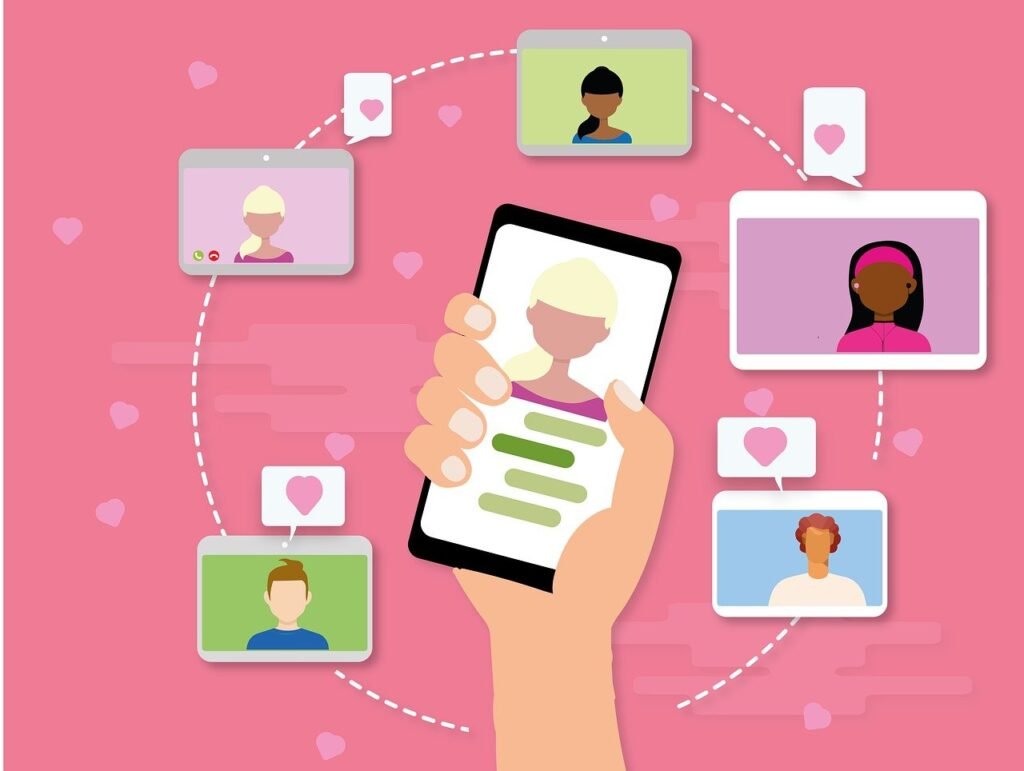
The Shift in Beauty Perception
Social media has significantly altered how teenagers perceive beauty. The constant exposure to edited and filtered images sets a new standard that is often unattainable. This shift in perception can lead to a distorted self-image and an unhealthy focus on appearance.
Strategic Insights for Businesses
To resonate with teenagers, brands should promote diverse and realistic representations of beauty. Highlighting the uniqueness of each individual and promoting messages of self-love can help counteract the negative effects of social media.
Engaging with teens through authentic and relatable content can also strengthen your brand‘s connection with this audience.
Actionable Advice
Develop campaigns that celebrate diverse beauty and encourage teens to embrace their individuality. Use social media platforms to share positive messages and stories of self-acceptance. Partner with influencers who promote realistic beauty standards and foster a supportive community that values authenticity over perfection.
11. How Does Cyberbullying Related to Appearance Affect Teenagers?
The Impact of Appearance-Based Cyberbullying
Cyberbullying related to appearance can have devastating effects on teenagers. Negative comments and harassment
about looks can severely damage self-esteem and lead to mental health issues. The anonymity of social media often emboldens bullies, making it easier for them to target individuals.
Strategic Insights for Businesses
Brands should take a stand against cyberbullying by promoting positive and supportive online interactions.
Partnering with anti-bullying organizations and running campaigns that raise awareness about the issue can demonstrate your commitment to creating a safe online environment. Encouraging respectful and kind behavior online can help build a more positive community.
Actionable Advice
Use your platform to speak out against cyberbullying and promote positive engagement. Share stories of individuals who have overcome cyberbullying and highlight resources available for those affected. Encourage your audience to report and stand up against bullying when they see it, fostering a culture of support and kindness.
12. Do People Change Their Diets to Look Like Influencers on Social Media?
The Influence of Social Media on Diets
Social media influencers often promote specific diets and lifestyle choices that promise quick results. Many followers try to emulate these diets in an attempt to achieve similar physiques. However, these diets are not always based on sound nutritional advice and can lead to unhealthy eating habits.
Strategic Insights for Businesses
Brands in the health and wellness sector should promote balanced and sustainable dietary practices. Highlighting the importance of personalized nutrition and debunking fad diets can build trust with your audience.
Offering evidence-based advice and partnering with nutrition experts can position your brand as a reliable source of health information.
Actionable Advice
Create content that educates your audience about the risks of following fad diets and the benefits of balanced nutrition. Share meal plans and recipes that promote overall health and well-being. Use testimonials from real customers who have achieved sustainable health goals with your products or services.
13. Is There Increased Pressure to Maintain a Certain Body Image Due to Social Media?
The Pressure of Perfection
The constant exposure to idealized body images on social media creates immense pressure to maintain a certain appearance. Users often feel that they must look perfect to gain acceptance and validation from their peers. This pressure can lead to unhealthy behaviors and a negative self-image.
Strategic Insights for Businesses
Brands should focus on promoting a healthy and balanced approach to body image. Emphasizing overall well-being and self-care over physical appearance can resonate with a broader audience. Showcasing a variety of body types and promoting messages of self-acceptance can help alleviate the pressure to look perfect.
Actionable Advice
Develop campaigns that highlight the importance of mental and physical health. Share content that encourages self-care practices and promotes body positivity. Engage with your audience through interactive content, such as wellness challenges and mindfulness sessions, to foster a holistic approach to well-being.
14. Do Men Worry About Their Muscle Mass Because of Social Media?
The Muscle Mass Dilemma
Men are increasingly concerned about their muscle mass due to the images they see on social media. The portrayal of highly muscular bodies as the ideal can lead men to feel inadequate and strive for an unrealistic physique. This concern can result in excessive exercising and the use of supplements or steroids.
Strategic Insights for Businesses
Brands targeting male audiences should promote a balanced view of fitness and health. Highlighting the importance of overall well-being, rather than just physical appearance, can create a more positive and sustainable approach to fitness. Featuring diverse male body types in your marketing can also help challenge unrealistic standards.
Actionable Advice
Create content that emphasizes the benefits of physical activity for mental and physical health, rather than just aesthetics. Share stories and testimonials from men who have found balance and well-being through realistic fitness goals. Partner with fitness influencers who promote healthy and attainable fitness routines.
15. Are Women Influenced by Social Media to Lose Weight?
The Weight Loss Obsession
Social media heavily influences women to lose weight, often promoting a slim and toned body as the ideal. This influence can lead to body dissatisfaction and unhealthy weight loss practices. Women may feel constant pressure to conform to these standards to be perceived as attractive or successful.
Strategic Insights for Businesses
Brands should promote healthy and sustainable approaches to weight management. Emphasizing the importance of a balanced diet, regular exercise, and mental well-being can help create a more holistic approach to health. Celebrating diverse body types and promoting messages of self-love can also resonate with your audience.
Actionable Advice
Develop content that educates women about the dangers of extreme dieting and the benefits of a balanced lifestyle. Share success stories from customers who have achieved health and wellness goals through sustainable practices. Offer products and services that support overall well-being and self-care, rather than just focusing on weight loss.

Related: Check out our free tools:

16. Are Teenage Girls Unhappy with Their Body Image Due to Social Media?
The Impact on Teenage Girls
Teenage girls are particularly susceptible to the influence of social media, with many feeling unhappy about their body image as a result.
The constant stream of images showcasing slim, edited, and idealized bodies can make teenage girls feel that they do not measure up, leading to feelings of inadequacy and low self-esteem. This dissatisfaction can negatively impact their mental health and overall well-being.
Strategic Insights for Businesses
Brands targeting teenage girls should focus on promoting body positivity and self-acceptance. Highlighting diverse body types and showcasing real, unedited images can help counteract the negative effects of social media.
Creating content that encourages self-love and confidence can resonate deeply with this audience, fostering a healthier self-image.
Actionable Advice
Develop campaigns that celebrate diversity and natural beauty, featuring teenage girls of all shapes, sizes, and backgrounds. Engage with your audience by sharing stories of individuals who have overcome body image issues and learned to embrace their uniqueness.
Offer workshops or online events that provide guidance on building self-esteem and developing a positive body image.
17. Do People Who Follow Fitness Influencers Feel Dissatisfied with Their Bodies?
The Influence of Fitness Content
Fitness influencers often post images and videos showcasing their toned and muscular bodies, which can set unrealistic expectations for their followers. Many people who follow these influencers may feel dissatisfied with their own bodies, believing they should look the same despite differences in genetics, lifestyle, and health.
Strategic Insights for Businesses
Brands in the fitness industry should promote realistic and attainable fitness goals. Emphasizing the importance of personal progress and well-being over comparison can help create a more positive and supportive community.
Highlighting the diversity of fitness journeys and celebrating individual achievements can also foster a healthier mindset among your audience.
Actionable Advice
Create content that educates your audience about the diverse factors that influence fitness and body composition. Share stories of individuals who have achieved personal fitness milestones through realistic and sustainable practices. Partner with fitness influencers who promote a balanced and inclusive approach to health and wellness.
18. Do Women Constantly Compare Themselves to Social Media Images?
The Comparison Culture
The culture of comparison on social media is pervasive, with many women constantly comparing themselves to the edited and filtered images they see online. This behavior can lead to a distorted self-image and chronic dissatisfaction with their appearance.
The pressure to match these unrealistic standards can be overwhelming and detrimental to mental health.
Strategic Insights for Businesses
Brands should aim to disrupt the comparison culture by promoting authenticity and self-acceptance. Highlighting the stories and experiences of real women can create a more relatable and inspiring narrative.
Encouraging your audience to focus on their own journey and achievements rather than comparing themselves to others can help foster a healthier online environment.
Actionable Advice
Develop campaigns that encourage self-reflection and personal growth, rather than comparison. Share content that emphasizes the uniqueness of each individual and the importance of embracing one’s own path. Use social media to start conversations about the negative impact of comparison and offer strategies for overcoming it.
19. Have People Considered Plastic Surgery Because of Social Media?
The Surge in Plastic Surgery Interest
Social media has fueled an increased interest in plastic surgery, with many people considering it as a way to achieve the idealized looks they see online. The proliferation of edited images and beauty filters creates unrealistic expectations, leading some to seek surgical solutions to alter their appearance.
Strategic Insights for Businesses
Businesses in the beauty and wellness sectors should promote self-acceptance and the beauty of natural features. While there is a place for cosmetic procedures, it’s important to balance this with messages that encourage self-love and confidence.
Highlighting the potential risks and long-term considerations of plastic surgery can also provide a more balanced perspective.
Actionable Advice
Create content that educates your audience about the realities of plastic surgery, including the risks and recovery process. Share testimonials from individuals who have chosen to embrace their natural beauty and found confidence without surgery. Offer products and services that enhance natural features and promote self-care.
20. Do Teens Use Social Media to Compare Their Looks to Peers?
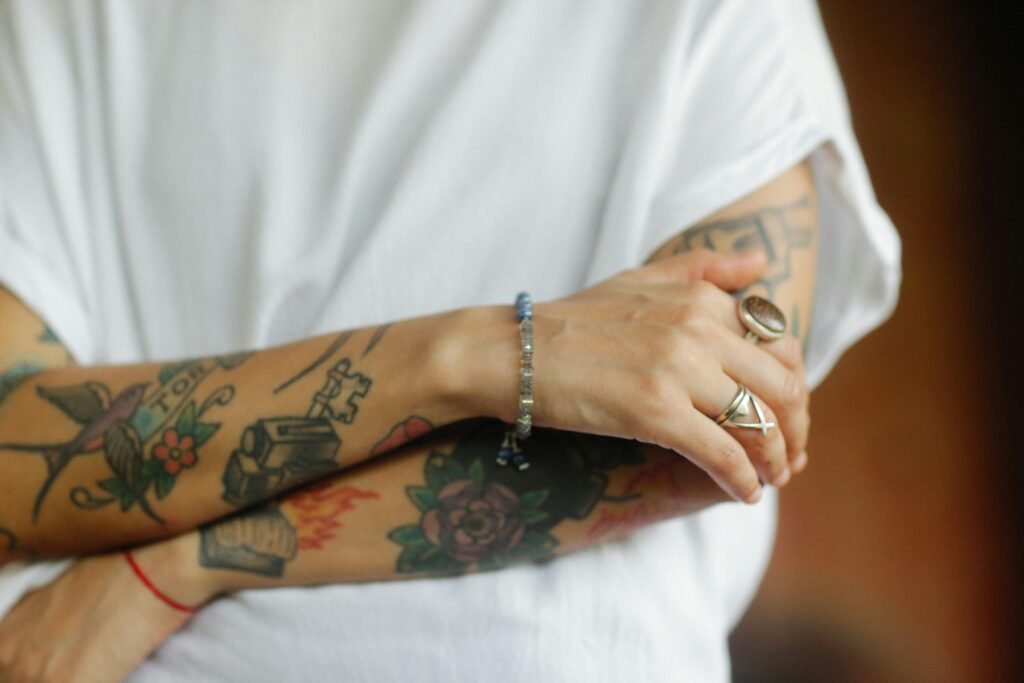
Peer Comparison and Its Effects
Teenagers frequently use social media to compare their looks to their peers, which can lead to feelings of inadequacy and low self-esteem. The curated and often edited images that teens see online set unrealistic standards that they feel pressured to meet.
This behavior can negatively impact their mental health and overall sense of self-worth.
Strategic Insights for Businesses
Brands should focus on creating a positive and supportive online environment for teens. Promoting messages of self-acceptance and celebrating individuality can help reduce the pressure to compare. Partnering with influencers who advocate for authenticity and mental well-being can also resonate with this audience.
Actionable Advice
Develop campaigns that highlight the importance of embracing one’s unique qualities and avoiding comparison. Share content that features real-life stories of teens who have learned to love themselves despite social media pressures. Engage with your teen audience through interactive content that promotes self-expression and confidence.
21. Do Social Media Platforms Promote Unrealistic Beauty Standards?
The Role of Social Media Algorithms
Social media platforms often promote unrealistic beauty standards through algorithms that prioritize visually appealing content. Edited and filtered images tend to receive more engagement, leading them to be featured more prominently. This creates a cycle where users feel pressured to conform to these standards to gain visibility and validation.
Strategic Insights for Businesses
Brands should advocate for more balanced and diverse representations of beauty on social media. By creating and promoting content that features real, unedited images, businesses can help challenge the status quo. Encouraging social media platforms to adjust their algorithms to highlight diverse and authentic content can also drive positive change.
Actionable Advice
Partner with influencers who prioritize authenticity and use their platforms to promote realistic beauty standards. Develop content that educates your audience about the impact of social media algorithms on beauty perceptions. Advocate for changes in social media policies that support more diverse and inclusive representations of beauty.
22. Are Teenage Girls Influenced by Social Media to Lose Weight?
The Weight Loss Influence
Teenage girls are heavily influenced by social media when it comes to weight loss. The portrayal of slim bodies as the ideal can lead to unhealthy dieting practices and a negative body image. Many teens feel pressured to lose weight to match the standards they see online, which can affect their physical and mental health.
Strategic Insights for Businesses
Brands should focus on promoting healthy and sustainable approaches to weight management. Emphasizing the importance of balanced nutrition and physical activity over drastic weight loss can help create a healthier narrative. Highlighting diverse body types and promoting messages of self-acceptance can also resonate with teenage audiences.
Actionable Advice
Create content that educates teens about the dangers of extreme dieting and the benefits of a balanced lifestyle. Share success stories from individuals who have achieved health goals through sustainable practices. Offer products and services that support overall well-being and self-care, rather than just focusing on weight loss.
23. Does Social Media Create an Unhealthy Obsession with Appearance?
The Obsession with Appearance
Social media can create an unhealthy obsession with appearance, as users often feel compelled to present a perfect image online. The constant need for validation through likes and comments can lead to a fixation on looks, overshadowing other important aspects of life and well-being.
Strategic Insights for Businesses
Brands should promote a balanced approach to life that values inner qualities and personal achievements over physical appearance. Highlighting stories of individuals who have found fulfillment and success beyond their looks can inspire your audience. Encouraging a focus on personal growth and self-care can also help reduce the obsession with appearance.
Actionable Advice
Develop campaigns that emphasize the importance of inner qualities, such as kindness, intelligence, and resilience. Share content that encourages self-reflection and personal development. Use your platform to start conversations about the dangers of an appearance-focused mindset and offer strategies for cultivating a more balanced and fulfilling life.
24. Do Teens Believe Social Media Creates Unrealistic Body Image Expectations?
The Unrealistic Expectations
Teenagers are aware that social media creates unrealistic body image expectations, but many still feel the pressure to conform. The constant exposure to edited and filtered images sets standards that are difficult to achieve, leading to dissatisfaction and a negative self-image.
Strategic Insights for Businesses
Brands should focus on promoting realistic and attainable beauty standards. Highlighting diverse body types and celebrating individuality can help counteract the negative effects of social media. Creating content that educates teens about the unrealistic nature of many online images can also foster a healthier self-image.
Actionable Advice
Develop campaigns that challenge unrealistic beauty standards and promote self-acceptance. Share educational content that explains the editing and filtering processes behind many social media images. Partner with influencers who advocate for authenticity and provide a realistic portrayal of beauty.
25. Do Women Want to Change Their Appearance Due to Social Media Influences?
The Desire for Change
Many women feel the desire to change their appearance due to social media influences. The constant comparison to edited and filtered images can lead to dissatisfaction with their natural looks. This desire for change often stems from the belief that they need to match the idealized standards portrayed online.
Strategic Insights for Businesses
Brands should promote messages of self-love and confidence, emphasizing the beauty of natural features. Highlighting the stories of women who have embraced their unique qualities can inspire your audience to do the same. Creating content that celebrates diversity and challenges the need for alteration can also foster a more positive and inclusive community.
Actionable Advice
Develop campaigns that feature real women and their natural beauty, avoiding the use of filters and heavy editing. Share testimonials from individuals who have learned to love themselves without resorting to drastic changes. Offer products and services that enhance natural features and promote overall well-being, rather than promising drastic transformations.
26. Does Social Media Increase Anxiety About Appearance?
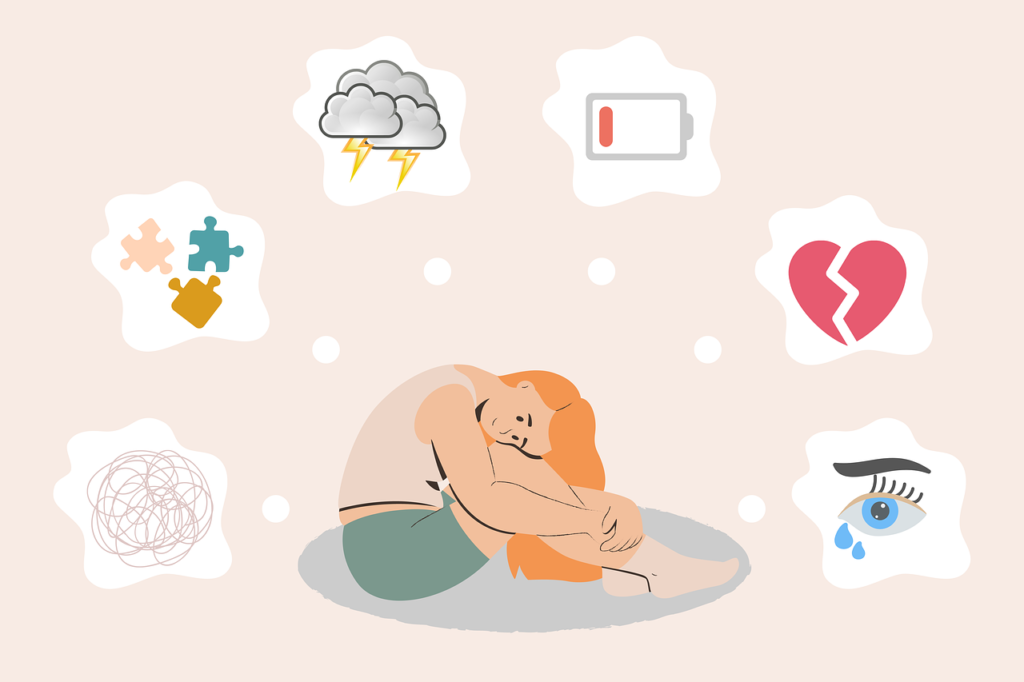
The Anxiety Epidemic
Social media significantly contributes to anxiety about appearance. The constant pressure to look perfect and the fear of judgment can heighten anxiety levels, especially when users feel they do not measure up to the idealized images they see online.
Strategic Insights for Businesses
Brands should focus on promoting mental well-being and self-care. Highlighting the importance of inner peace and self-acceptance can help reduce appearance-related anxiety. Partnering with mental health organizations and experts to create content that addresses these issues can also demonstrate your brand’s commitment to overall wellness.
Actionable Advice
Create content that emphasizes the importance of mental health and provides strategies for managing anxiety. Share stories from individuals who have found peace and confidence through self-acceptance. Offer products and services that support mental well-being, such as mindfulness apps or wellness retreats, to help your audience cope with appearance-related anxiety.
27. Do Social Media Users Feel Pressured to Show Their Best Selves?
The Pressure to Perform
Social media users often feel pressured to present the best version of themselves online. This pressure can lead to carefully curated posts and edited images that create a facade of perfection. While this may garner more likes and positive feedback, it also perpetuates unrealistic standards and increases stress.
Strategic Insights for Businesses
Brands should encourage authenticity and transparency in their marketing. By sharing behind-the-scenes content and showcasing the realities behind the polished exterior, you can humanize your brand and make it more relatable. Emphasizing the importance of authenticity can also help reduce the pressure users feel to present a perfect image.
Actionable Advice
Develop campaigns that highlight the unfiltered and authentic aspects of your brand. Share content that shows the behind-the-scenes realities of your business, including challenges and setbacks. Engage with your audience through interactive content, such as live Q&A sessions or behind-the-scenes tours, to foster a more genuine connection.
28. How Common is Body Shape Alteration in Photos?
The Prevalence of Photo Editing
Altering body shape in photos is a common practice among social media users. These edits can range from slimming waists and enhancing muscles to smoothing skin and changing facial features. While these alterations may provide a temporary confidence boost, they also contribute to unrealistic beauty standards and negatively impact self-esteem.
Strategic Insights for Businesses
Brands should promote the beauty of natural features and the importance of authenticity. By showcasing real, unedited images in your marketing, you can help challenge the norm of photo editing. Encouraging your audience to embrace their natural appearance and highlighting the uniqueness of each individual can foster a more inclusive community.
Actionable Advice
Create campaigns that celebrate natural beauty and encourage users to share unedited photos. Develop content that educates your audience about the negative impact of photo editing on self-esteem. Offer products and services that enhance natural features and promote self-care, rather than promising drastic transformations.
29. Do Men Feel Pressured to Look More Muscular Because of Social Media?
The Muscle Pressure
Men are increasingly feeling the pressure to attain a more muscular physique due to social media. The prevalence of images featuring highly muscular bodies sets a standard that many men strive to meet, often leading to excessive exercising and the use of supplements or steroids.
Strategic Insights for Businesses
Brands targeting male audiences should promote a balanced approach to fitness and health. Emphasizing the importance of overall well-being, rather than just physical appearance, can create a more positive and sustainable approach to fitness. Highlighting diverse male body types in your marketing can also help challenge unrealistic standards.
Actionable Advice
Create content that emphasizes the benefits of physical activity for mental and physical health, rather than just aesthetics. Share stories and testimonials from men who have found balance and well-being through realistic fitness goals. Partner with fitness influencers who promote healthy and attainable fitness routines.
30. Do Teens Believe Social Media Promotes Unrealistic Beauty Standards?
The Recognition of Unrealistic Standards
Many teenagers recognize that social media promotes unrealistic beauty standards. Despite this awareness, they still feel the pressure to conform to these standards, leading to a negative self-image and dissatisfaction with their appearance. The constant comparison to edited and filtered images makes it difficult for teens to appreciate their natural beauty.
Strategic Insights for Businesses
Brands should focus on promoting realistic and attainable beauty standards. Highlighting diverse body types and celebrating individuality can help counteract the negative effects of social media. Creating content that educates teens about the unrealistic nature of many online images can also foster a healthier self-image.
Actionable Advice
Develop campaigns that challenge unrealistic beauty standards and promote self-acceptance. Share educational content that explains the editing and filtering processes behind many social media images. Partner with influencers who advocate for authenticity and provide a realistic portrayal of beauty.
We got all the latest Marketing Stats here:
READ NEXT:
- 7Ps in Marketing Mix – What are They? (Explained)
- How to use ActiveCampaign: An Explainer
- Best Sales Outreach Tools for Your Business: Compared
- Retire in Comfort: SEO for Planning Your Retirement Income
- Founders’ Agreement for Startups: The Complete Guide







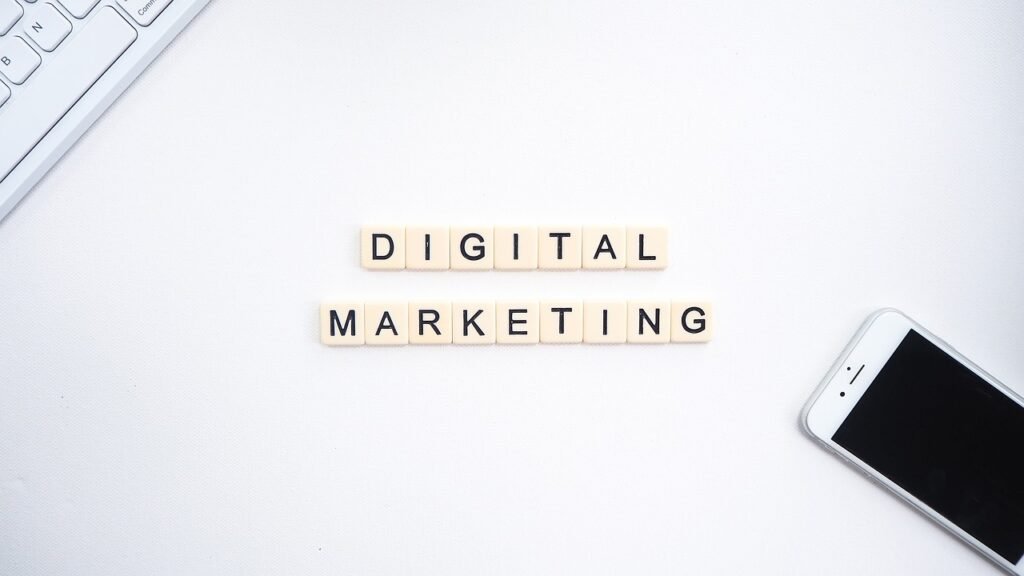










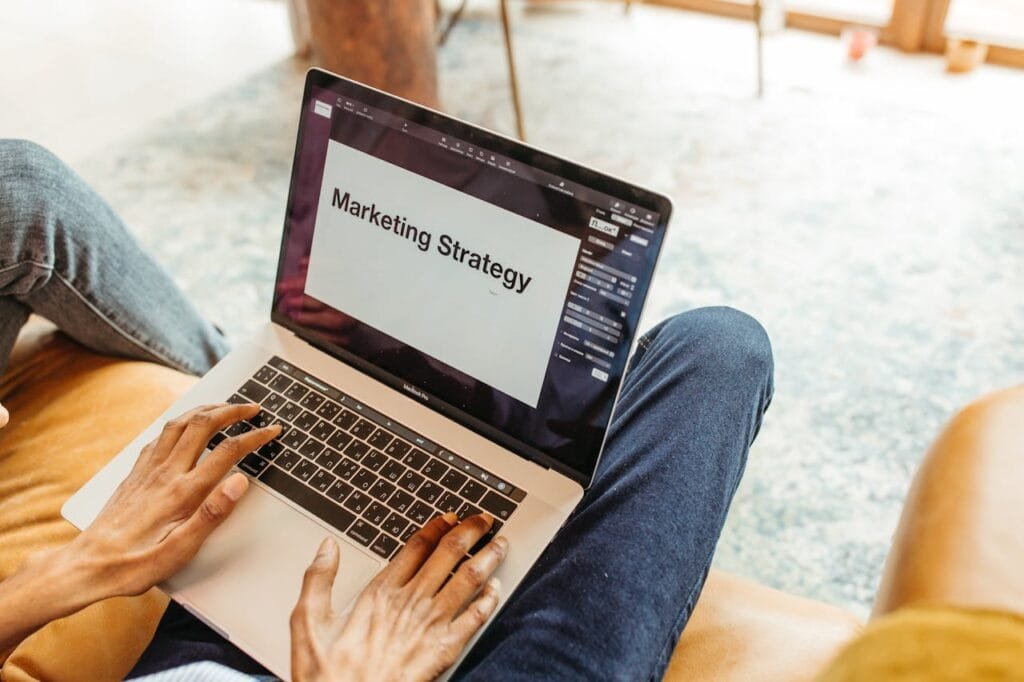


Comments are closed.